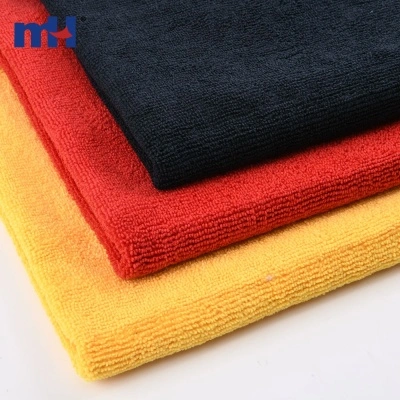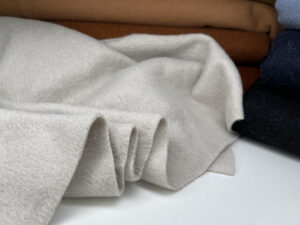Does Nylon Shrink When Mixed with Microfiber?
Fabric compatibility is a crucial consideration in fashion and sewing, impacting the final look, feel, and durability of garments. When it comes to mixing fabrics like nylon and microfiber, understanding their compatibility is essential. This article will explore whether nylon shrinks when mixed with microfiber, providing insights into their properties and how they work together.
Compatibility Analysis
The short answer is NO, nylon does not typically shrink when mixed with microfiber. Both nylon and microfiber are synthetic fabrics, which generally exhibit stable dimensions after washing. However, their compatibility goes beyond just shrinkage.
Why They Work Together
- Texture and Weight: Both fabrics have a smooth texture, making them complementary in terms of feel and weight.
- Stretch and Care: Nylon offers elasticity, while microfiber is known for its softness and moisture-wicking properties. However, both require similar care, such as gentle washing and avoiding high heat.
- Durability: Both fabrics are durable, making them suitable for various applications, from clothing to home decor.
Fabric Properties Comparison Table
| Property | Nylon | Microfiber |
|---|---|---|
| Fiber Content | Synthetic | Synthetic |
| Weight and Thickness | Lightweight | Lightweight |
| Breathability | Moderate | High |
| Moisture-Wicking | Moderate | High |
| Stretch and Elasticity | High | Moderate |
| Wrinkle Resistance | High | High |
| Care Instructions | Cold wash, low iron | Cold wash, low iron |
| Durability | High | High |
Benefits of Mixing These Fabrics
- Enhanced Texture and Visual Interest: The combination can create a unique tactile experience and visual appeal.
- Improved Comfort and Performance: Nylon’s stretch and microfiber’s breathability make for comfortable, high-performance garments.
- Better Drape and Movement: Both fabrics drape well, allowing for fluid movement in clothing.
- Cost-Effectiveness: Synthetic fabrics are generally more affordable than natural ones.
- Seasonal Versatility: Suitable for both warm and cool weather due to their moisture-wicking properties.
- Design Possibilities: Offers a wide range of design options for both fashion and home decor.
Potential Challenges
- Different Shrinkage Rates: While unlikely, always pre-wash fabrics to prevent surprises.
- Conflicting Care Requirements: Stick to the gentlest common care routine.
- Texture Clash or Pilling: Use fabric softeners and avoid abrasive surfaces.
- Seam Puckering: Use appropriate tension and needle size.
- Color Bleeding or Fading: Wash with similar colors and use color-safe detergents.
Sewing & Styling Tips
- Sewing Techniques: Use a stretch stitch or zig-zag for flexibility.
- Needle and Thread: A size 70/10 needle and polyester thread work well.
- Interfacing and Stabilizer: Use lightweight interfacing to maintain structure.
- Seam Finishing: Consider French seams or serging for a neat finish.
- Pattern Selection: Opt for patterns that highlight the drape and stretch of the fabrics.
- Styling Ideas: Mix and match textures in garments or use for cushion covers and drapes in home decor.
Care & Maintenance Guide
- Washing Instructions: Wash in cold water on a gentle cycle.
- Drying Recommendations: Air dry or tumble dry on low heat.
- Ironing and Steaming: Use a low setting or steamer to avoid damage.
- Stain Removal: Treat stains promptly with mild detergent.
- Long-Term Care: Store in a cool, dry place to prevent degradation.
FAQ Section
-
Can you wash nylon and microfiber together?
Yes, they can be washed together using cold water and a gentle cycle. -
Will nylon shrink more than microfiber?
Both are unlikely to shrink significantly, especially when cared for properly. -
What needle size should I use for sewing these fabrics together?
A size 70/10 needle is recommended for these lightweight fabrics. -
Can you mix nylon and microfiber in one garment?
Absolutely, they complement each other well in terms of texture and performance. -
How do you prevent seam puckering when combining these fabrics?
Use a stretch stitch and adjust the tension on your sewing machine. -
Is it okay to mix nylon and microfiber for upholstery?
Yes, they can be used for upholstery, offering durability and a sleek finish. -
What’s the best way to finish seams with these fabrics?
Consider using a serger or French seams for a professional look.
By understanding the properties and compatibility of nylon and microfiber, you can create beautiful, durable garments and home decor items. Whether you’re a seasoned designer or a home sewing enthusiast, these insights will help you make the most of these versatile fabrics.



Leave a Reply